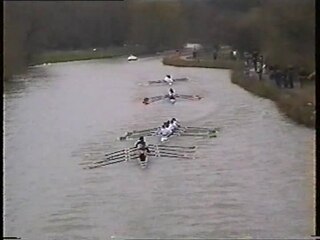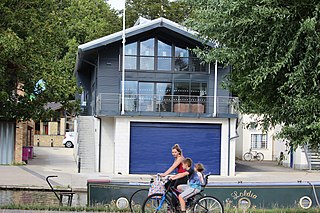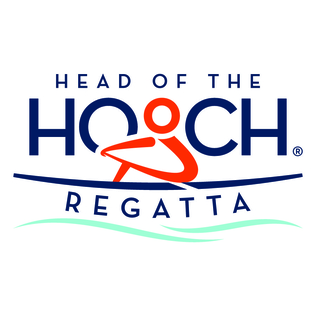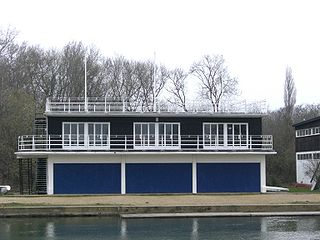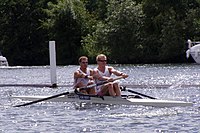Rowing
The Head of the Trent is a day-long regatta of timed trial head races where rowers and teams compete to be the quickest through the course, which runs an approximately 5 km length along the Trent-Severn Waterway. [1] [2] [3]
Racing begins at 8:30 a.m. and runs until sunset. [9] The races are split into six divisions - the day is organized by division, with Division 1 going first and Division 6 going last. [9] Throughout the regatta there are events for different skill levels, team sizes, ages, genders, clubs and weight-classes; such as: Championship Single Men, University Heavy Eight Women, Under 19 Double Men and Recreational Coxed Four. [2]
The Head of the Trent is a notable regatta and course for several reasons. The course offers many bridges and waterfront viewing areas that make races spectator-friendly. [6] And the coincidence of the university's homecoming celebrations mean there are thousands of revelers to watch the races. [6] [1] The course is also particularly tricky, and is known as one of Canada's "toughest tickets." [6] The course has several significant bends and a 300-metre stretch of the canal known as "the narrows" which has such a small width that it necessitates a no-passing zone. [6]
The narrowness of the canal necessitates special rules controlling traffic as there is not enough space for boats to pass in both directions. [6] For this reason, organizers have opted to organize the races into divisions to control which boats are allowed to pass through the narrows. [6] And due to the constraints of these logistic concerns and the need to complete all races before the sun sets, the regatta organizers have acknowledged that the race cannot handle more than 400 crews. [6] Although demand is much higher and more teams want to compete at the Head of the Trent, the event is one of Canada's slowest growing due to this logistical cap. [6]
In the past, the sporting event has comprised over 2,000 athletes in approximately 400 boats [2] from over 50 universities, high schools and clubs across North America. [1] [3]
Course
The course for the Head of the Trent regatta has remained largely the same since the race was founded in 1971. The only major change is the additional starting line for competitors in the recreational division, which makes the course 1 km shorter for the recreational races.
The competitive course begins at a point just South of the Parkhill Rd. bridge. [2] [1] Rowers make their way North 1 km up the Trent-Severn canal and turn sharply Northeast into a broader stretch. [1] Next the course takes a hard turn North-Northeast into Quilter's Bay. [1] Rowers continue into a very narrow segment of the canal that spans just 300 metres in length known as "the narrows", where passing is not permitted. [1] [2] [6] This narrow segment ends after the boats pass "the point" and enter the Otonabee River, passing Bata Library and crossing the finish line just beyond the Faryon Bridge. [2] [1]
In many places, red buoys mark the bounds of the course and competitors must pass through the buoys or receive a time penalty. [10]
Rules and regulations
The Head of the Trent follows the rules laid out by the Rowing Canada Aviron with a few local rules that augment or bypass the national governing body's regulations. [10] These local rules include information on how competitors should navigate the course when preparing to begin, leaving the course, and passing through the narrow section of the canal. [10]
Between divisions, the canal opens after the last boat of the previous division has passed through it and closes twenty minutes after that, providing a quick launch window for competitors. [2] Crews who do not proceed through the canal within the prescribed time period are disqualified from their event." [2]
There are several conditions under which competitors may take on time penalties that impact their final score, including cutting corners around buoys, crossing the starting line before the race begins and crossing into the active race area when returning to the launch area. [10]


